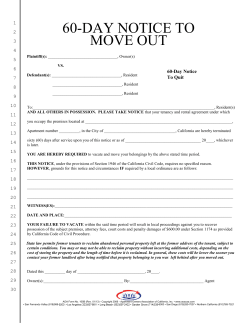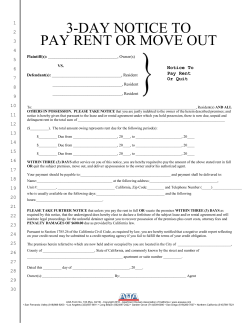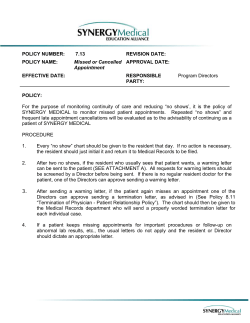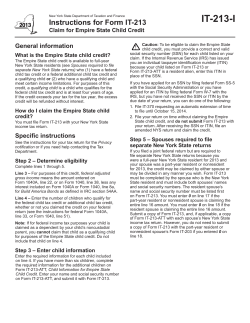
Paul Barach, MD, MPH Change Clinician’s Behavior
Barriers to Change: Why is it so hard to Change Clinician’s Behavior Paul Barach, MD, MPH Where are we from? Who are we? •• We We are are an an overloaded overloaded system system •• We We cannot cannot keep keep up up with with complex complex diagnostic diagnostic and and therapeutic therapeutic technologies technologies •• We We have have not not changed changed workflows workflows and and roles roles in in the the past past couple couple of of centuries centuries •• We We have have placed placed most most emphasis emphasis on on sickness sickness control, control, not not on on health health promotion promotion •• We We face face the the same same challenges challenges everywhere, everywhere, but but are are tackling tackling them them independently independently Reason #1: Mental Models Mental Models z z The images, assumptions, and stories we carry in our minds of ourselves, other people, institutions, and every aspect of the world They determine what we see, and most importantly, how we act What Might this Mean for Our Work? z Examples from clinical care, education z z z z z z z Drug seeking behavior Patient non-compliance “Difficult” patient/family Born surgeon Anesthesia--reading the newspaper, having coffee Bean counter How about from our non professional life? z z z Illegal immigrants Women in combat Marriage Mental Models z z z None are perfectly accurate Differences in mental models explain how two people can understand the same event differently Are generally invisible to us – until we look for them The Ladder of Inference 9 Variation in CABG rates per 1000 Medicare Enrollees CPR Quality during Cardiac Arrest Two companion studies of CPR quality: z Chest compressions were not delivered half of the time and compressions were too shallow (“out-of-hospital”). z Quality of multiple CPR parameters was inconsistent and often did not meet published guidelines (“in-hospital”). Abella BS, Alvarado JP, Hyklebust H, et. al. Quality of Cardiopulmonary Resuscitation During In-Hospital Cardiac Arrest. JAMA, January 19, 2005, 293(3):305-310 U.S. Adults Receive Half of Recommended Care Percent of recommended care received Source: McGlynn et al., “The Quality of Health Care Delivered to Adults in the United States,” The New England Journal of Medicine (June 26, 2003): 2635–2645. 12 Hospital acquired infections z z z z z z Top quality problem in US. 1 in 136 patients~ 2 million patients 1 in 5 patients: Morocco, Albania, Tunisia Annual direct patient costs @$45 billion 19% perioperative hand compliance rate—NL 2007-2008 (BMJ, under review) JCAHO expects>90% Human Error Rates z Error of commission (misreading a label) z Error of omission (item embedded in 3/1000 z procedure) Error of omission (without reminders) 1/100 z Error in simple arithmetic (with self check) 3/100 z Personnel on different shift fail to check 1/10 conditions unless directed by a checklist Errors under very high stress when 25/100 dangerous activities are occurring rapidly z 3/1000 Adapted from: Park, K. Human Error. In Salvendy, G, ed. “Handbook of Human Factors and Ergonomics”, New York. John Wiley & Son, Inc. 1997: 163. Wrong Site Procedures—Identification Problems No cases of wrong side anesthesia in the literature 40-70 cases/ year in Florida reported JCAHO 300 cases ALL of US 1997-2003 6000 cases NPDB 1990-2003 1300-2600 cases/US/year Seiden, S, Barach P, Archives of Surgery, 2007. www.Wrong-side.org Miami Herald, 1.27.04 Why Do They Occur? Human factors • • • • • • • • • • Patient factors • • • • • • • Procedure factors • • • • Attempts to prevent WSPE • • High workload environment Fatigue Multiple team members Diffusion of authority/lack of accountability Team communication Change of personnel Haste Inexperience Incompetence Other cognitive factors Older, lower mental function, psychiatric Sedation or anesthesia Patient not consulted before anesthesia Patient confusion of side/site/procedure Inability to engage patient (e.g., young child or decreased competence) Patient ignorance Patient has common name or same name as another patient in hospital Wrong side draped/prepped Similar or same procedures back to back in same room Patient position or room changed prior to initiating procedure Site Salience Not observing marked site/not marking wrong site Not cross checking for consistency in consent form, patient chart, and OR booking form. Seiden, S, Barach, P. Wrong-side, wrong procedure, and wrong patient errors. Are they preventable? Archives of Surgery, 2006; Barach, Anesthesia and Analgesia 2007. Left-Right Blindness? Physicians were more likely to have difficulties in distinguishing left from right than university professors and college students • 8.8% physicians • 6.0% university professors • 3.5% college students Storfer MD. Problems in left-right discrimination in a high-IQ population. Percept Mot Skills 1995; 81(2):491-7. Risk Factors for Wrong Sided Surgery z z z z z z z z z z z z z Emergencies (19%) Obesity and Physical deformity (16%) More than one surgeon in case (13%) Performing multiple procedures on multiple parts during single encounter (10%) Time pressure to start/end and/or emergency (13%) Illegible handwriting Exclusion of some team members Failure to include patient and family in process Unusual OR set-ups Inadequate patient assessment Lack of institutional policy Reliance on surgeon solely to determine site Cultural or language barriers Ensuring Correct Surgery. AORN Journal 2002;76: 770-780. D’Ambrosia R, Kilpatrick J. Medical Errors and wrong site surgery. Orthopedics 2002;25:288. Barach P, et al, 2005. 19 20 Reason #2 Current improvement methods in healthcare are highly dependent on vigilance and hard work and ignore the system Exercise: Vigilance and Hard Work 1. Recall an experience – in any setting – in which the request that you “try harder,” “be careful,” or “stay alert” improved your performance. Why did that work? 2. Identify a process in your organization that relies on vigilance. What would you estimate its reliability to be? The focus on outcomes tends to exaggerate the reliability within healthcare giving clinicians and executives a false sense of security. Adverse Event Rates in Healthcare Amalberti, R, Auroy, Y, Berwick, D, Barach, P. Five System Barriers To Achieving Ultra-safe Health Care. Annals of Internal Medicine, 2005;142:756-764. Cardiac Surgery Patient ASA 3-5 Medical risk (total) Microlight flights helicopters Road Safety Himalaya mountaineering 10-2 Very unsafe 10-3 Blood transfusion Anesthesiology ASA1 Chartered Flight Railways (France) Chemical Industry (total) 10-4 Civil Aviation 10-5 No system beyond this point Fatal Iatrogenic adverse events Nuclear Industry 10-6 Ultra safe Risk Organizational Accident Causation Model Organization Workplace Person/team Management Decisions & Organisational process Error & Violation Producing conditions Errors & violations Latent conditions pathway Defenses Accidents Guiding principles Three strategies to reduce risk Detection Recovery Prevention Mitigation Insurance SAFETY Update resilience Detection Resilience Recovery Prevention Reason’s original illustration of resilience Mitigation Insurance TIME Competitiveness Reason’s revisited Illustration of the swing from one type of resilience to another. Note the twist in safety reference compared to original figure. The successive swings generally correspond to better safety arbitrations to the detriment of competitiveness Resilience Resilience SAFETY Reason #3 Ignore Role of Human Factors Paris in the the Spring. DOES THE DAY OF WEEK MATTER? operations performed on Fridays were associated with a higher 30-day mortality rate than those performed on Mondays through Wednesdays: 2.94% vs. 2.18%; Odds ratio, 1.36; 95% CI, 1.24–1.49) Medication Cart Drawer—does Your Cart Look different? The 93% vs. 7% Rule Negligent Conduct (People) Human Error (People) Reckless Conduct (People) Organizational Design 93% Knowing Violations (People) Performance Shaping Factors Affecting Human Vigilance z z z z z z Fatigue Environmental Conditions/Built Environment Task Design Psychological Conditions Competing Demands Hand offs/Sign outs The Built Environment and Patient Safety z z The physical environment has behavioral side effects The designed, built environment determines the setting in which care is delivered z z z z z z Air quality and ventilation Color, texture, reflectance Lighting character, quality, amount Layout and space Noise and vibration Friction/traction Ulrich R, Zimmer C, 2005; Dickerman K, Barach P, 2005; Ulrich R, Barach P, 2006 . E AL SO UN SC G INDIN WAYF D Components of Healthcare Design Quality FUR NISH INGS TO E S R ES TU C C NA A MA ARO QUALITY MAT E RI A LIGHT P CO RIVA NT CY RO / L ART & TY FE ITY S A CUR SE TE XT UR E OR L CO LS Error Rate Medication Dispensing Error Rates by Illumination Level (Buchanan et al., 1991) 480 lux 250 lux 1100 lux 1550 lux (Lighting on task, not ambient) The Impact of Design on Patient Outcomes Source: Healthcare Leadership white Paper: Ulrich, Zimring, Zhu, DuBose, Seo, Choi, Quan, Joseph (2008) http: //www.healthdesign.org/hcleader/HCLeader 5 LitReviewWP.pdf Reason #4: Ignore the Microsystems z z Small group of clinicians and staff working together with a shared clinical purpose to provide care for a defined set of patients The clinical purpose defines the essential parts of the microsystem z z z z z Clinicians and support staff Information and technology Care processes Broader than simple teams, larger context with which providers work, a context that is characterized by: procedures, regulations, management, performance based rewards and penalties. Complex but poorly understood impact on the performance of individuals/teams. Mohr J, Batalden P, Barach P. Qual Saf Health Care 2004;13 Suppl 2:34-8. ; Mohr J, Barach P, 2006; Barach P, Mohr, 2007. A Common View of a Clinical Organization Chief of Chiefs Chief of Doctors Chief of Nurses Chief of Information Reason #5 Role of Communication Role of Hand-offs z z z z z Exchange of vital information Shared mental models and cognition of patient status Exchange and uptake of responsibility Part of the microsystem life-cycle Vital to Unit, patients, and workers survival Psychology of Miscommunication Speakers systematically overestimate how well their messages are understood by listeners Model of Speech Communication Egocentric heuristic– Senders assume that receiver has all the same knowledge that they do z Worsens for those familiar with each other Study of pediatric handoffs z The most important piece of information was not successfully communicated 40% of the time despite the sender believing it had been Barach P , et al , MJA, 2009; Keysar, et al, 2006 Hand-off as a Form of Communication “When you move from right to left, you lose richness, such as physical proximity and the conscious and subconscious clues. You also lose the ability to communicate through techniques other than words such as gestures and facial expressions. The ability to change vocal inflection and timing to emphasize what you mean is also lost…Finally, the ability to answer questions in real time, are important because questions provide insight into how well the information is being understood by the listener.” –Alistair Cockburn The View from the Catwalk Anesthesia Resident to Nurse Hand-Off Patient in OR Is patient ok to go to PACU? yes Resident tells circulating nurse about special needs (venilator, a-line, invasive monitors, etc.) Resident mentally summarizes case to prepare for documentation Resident moves patient to PACU Resident arrives in PACU and shouts out to unit clerk “Where am I going/what number bed?” Sec’y or someone else answers with bed or slot number Resident takes patient to designated slot no Patient goes to ICU Are nurses waiting at slot? yes Nursing hooks up monitors with priority on oxygen and pulse ox, then EKG and blood pressure, etc. Clear delineation of roles/responsibility Is there a greater than 30 second delay in hook up? no Resident puts monitor on patient and hooks up oxygen, questions why no nurses no Resident completes documentation of case (fills out PACU vitals, writes note, documents handoff given) Is patient high risk? (difficult airway, labile vitals, anes problem) no Back-up Behavior yes Resident identifies nurses that are taking care of patient Resident mobilizes nursing team to put on monitors Resident gives report (content checklist) Resident mobilizes nursing Nurses accept patient Nurses arrive Resident completes and signs PACU orders yes PACU resident called and given special report Factors in Nurse-Physician Communication Relationship Racial Differences Team Approach Authority Gradient (clinical and non-clinical issues) Respect Methods for effective communication MD - RN Differences in Clinical Judgement Trust Socio-economic Differences Gender Differences Shared Philosophy of Meeting Patient Needs Staffing Issues Communicate Plan to RN Physical Space Hostility Helpless/ Hopeless Impact of Hospital Systems Culture Responsibility/Accountability Organizational Support Financial Drivers Understanding Other Roles RN - MD Difference s in Training Transient Work Structure Collaborative Patient Care RN as Teacher/ Advisor MD Confidence, Uncertainty Education and Training Sharit J, Barach P. Human Factors Proceedings 2005 Influence Diagram Sharit, McCane, Thevenin, Barach. Risk Analysis. 2008. Analysis of Interventions Sharit, McCane, Thevenin, Barach. Risk Analysis. 2008. Reason # 6--Role of Non technical skills in Team work Research questions z How do some teams perform and recover so well? z How do adverse conditions, mediated by team and task processes, lead to negative outcomes (nonroutine events and negative team outcomes)? z Can we reduce the negative outcomes by means of an intervention focused at the team level (nontechnical skills) or through the adjustment of external conditions? The Team Coding for TEAMS: S1=Primary Surgeon, S2=Assisting Surgeon1 S3=Assisting Surgeon2 A1=Anesthetist A2=Anesthetic Nurse P1=Perfusionist P2=Perfusionist N1= Assisting Nurse N2=Circulating Nurse P2 P1 Perfusion HLM S3 Anesthetic Workstation S1 A1 N2 N1 S2 Pumps & drips A2 Types of non-task related NREs External distractions (pagers, beepers, phones) 80 Internal sounds (beeps, alarms) 37 Design of OR (‘battle for real estate’, footstools, wires, tubes) 23 Hygiene (improper mask wearing, two doors open simultaneously) 20 Anesthesia-related problems 17 Monitor problems 17 Falling on floor (object and instruments drop on floor) 16 Problems with sterility 16 Remarkable behavior (drinking coffee in OR, taking a picture, bringing in mail) 13 Perfusion-related problems 12 Unintended effects on patient 11 Bleeding 9 Absence (personnel arrive too late, heart-lung machine temporarily unmanned) 6 Equipment failure 4 Unclear Total 35 316 Non Technical skills--NOTECHS Tool – 2 dimensions (total 4) NOTECHS Tool – Part 2 2 dimensions (total 4) Distribution of Major and Minor Events (Barach P, et al 2008) 15 10 5 0 t or sp an g Tr orin it on M ty ili er St ho n Ec a tio ic ed nt e M m ru st ... In tive ion ni at og nic C u ct m u om rod r.. . C a P d on oo ulm . .. Bl op chn di ar l Te t C a en ic rg em Su lac P ne Li i ng d ee on r Bl ti ila ula n t sc Ve va o di ar C Number of events Fig. 4 The distribution of types of major events Figure A. 44% of major events were cardiovascular, ventilation and bleeding problems (patient related problems) Type of the event Number of event Fig. 5 The distribution of types of minor events 300 200 100 0 ho Ec ng ct di ee odu r Bl P d oo n io Bl at ic ed e M .. tiv hn. ni c og Te C al ic rg Su tion r ila ula nt c Ve as ov di ar g C rin ito on t .. . M or ar sp on an m Tr pul o di ar C t ty en ili er em St ac Pl t ne n .. Li e n. m io ru at st ic In un m om C Type of the event Figure B. 44 % of all minor events communication/ coordination and instrumentation problems were detected (not patient related problems) Model of “Big 5” Teamwork THE CORE Closed Loop Communication Team Orientation Team Leadership Mutual Performance Monitoring Adaptability Shared Mental Models Barach, et al 2008. Schrager J, Smit M, Barach P, 2009. Mutual Trust Back-Up Behavior The TeamSTEPPS Framework z Knowledge z z Attitudes z z z Shared Mental Model Mutual Trust Team Orientation Performance z z z z z Adaptability Accuracy Productivity Efficiency Safety Baker D, Salas E, Battles J, King H, Barach P, 2005; Baker, Barach Salas, King, 2007 Reason #7 Role of the Culture May 1, 2006 STS-107 Columbia Space Shuttle z February 1, 2003 Space Shuttle Columbia and its 7member crew are lost re-entering the Earth’s atmosphere z The Columbia Accident Investigation Board’s independent assessment takes seven months Columbia Accident Investigation Board “Cultural norms tend to be fairly resilient…the norms bounce back into shape after being stretched or bent. Beliefs held in common resist alteration….This culture acted over time to resist externally imposed changes. By the eve of the Columbia accident, institutional practices that were in effect at the time of the Challenger accident had returned to NASA.” Person /Team Individual Unsafe Acts z Errors z Attentional Slips and memory lapses (Intrusions, omissions) z Mistakes z z Rule –based Knowledge-based z Violations( deliberate deviation from regulation) z Routine ( shortcuts) z Optimizing Violations z Exceptional z Deliberate z Normalized deviance Results -Safety Culture in the ORz 3 academic PCS teams were “surveyed” on: z z z z z z z z z z Adverse event reporting OR management Safety culture 72% response rate Significant differences (p<0.001) between both institutions regarding communication at all levels Significant differences between surgeons and perfusionists vs. nurses re. “trained to use equipment”, and “system take into consideration safety” Significant differences in sense of empowerment, safety and organizational backing 45% felt that outcomes were not safe 33% felt that errors of the same kind keep on recurring 47% felt that administration was not senstive to patient safety issues Bognar A et al, Annals of Surgery, 2008 Stages in the development of a safety culture un ta bi l ity PROACTIVE Safety leadership and values drive continuous improvement PATHOLOGICAL Who cares as long as we're not caught Ac nd Tru st a REACTIVE Safety is important, we do a lot every time we have an accident co CALCULATIVE We have systems in place to manage all hazards Inc re as ing Inc re as ing ly Inf or me d GENERATIVE (High Reliability Orgs) HSE is how we do business round here Reason #8: Secrecy and non transparency The Cloak z z z Painfully incorporated desire not to appear incompetent Behaviors conferring a sense of protection are greater: z The more terrorizing and fatiguing the training or the greater the possibility of catastrophic error on a moment-tomoment basis “The problem is we get so used to cloaking our irrational decisions in the guise of wisdom and experience, we confuse good luck with good judgment, and that’s where diagnostic errors often begin.” "It is incident to physicians, I am afraid, beyond all other men, to mistake subsequence for consequence.“ Wachter,RM and Shojania,KG: Internal Bleeding: The Truth Behind America’s Terrifying Epidemic of Medical Mistakes. 2004. 74 Samuel Johnson, 1756 When to call for help? Disclosing Adverse Events z Disclosure is required when z z z z z z z Has a perceptible effect on the patient not discussed in advanced with patient Necessitates a change in patient care Poses risk to patient’s future health Involves non-consented treatment or procedure Reduces chances of being sued Transparency in process helps the team address guilt New law in Florida requiring disclosure Cantor M, Barach P, et al. Jt Comm Qual Patient Saf 2005;31:5-12. Barach, P, Cantor M, 2007 Conclusions Reason – Complex Systems Key Messages Local leadership z z z z All change is local The research team can’t improve the process that is being studied -- this has to be accomplished by those at the front lines Local champions are necessary to lead and manage the improvement piece Champions need to be nurtured (they won’t necessarily know what to do) Arora, VM; Johnson, J. “Spreading and Sustaining Use of Standardized Handoff Protocols for Residency Training.” In: Implementing and Sustaining Improvements in Health Care. USA: Joint Commission Publishing. 2009. pp 88-97. Johnson J, Barach, Medical J of Austraralia, 2009. Barriers To Achieving Ultra-safe Healthcare z z z z z Acceptance of limitations on maximum performance Abandonment of professional autonomy Transition from mindset of craftsman to that of an equivalent actor Need for system-level arbitration to optimize safety and develop a culture of safety Simplify professional rules and regulations Amalberti R, Berwick D, Barach P. Annals of Internal Medicine 2005;142:756-764. Average rate per exposure of catastrophes and associated deaths in various industries and human activities Amalberti, R. et. al. Ann Intern Med 2005;142:756-764 Challenges/Opportunities Sustainability z z What happens when you are “done” with the project? How do you sustain the improvement? Identify local champions Build around microsystem Build-in process monitoring and evaluation from the beginning Connect to present clinical and organizational processes Arora, Arora, VM; VM; Johnson, Johnson, J. J. “Spreading “Spreading and and Sustaining Sustaining Use Use of of Standardized Standardized Handoff Handoff Protocols Protocols for for Residency Residency Training.” Training.” In: In: Implementing Implementing and and Sustaining Sustaining Improvements Improvements in in Health Care. USA: Joint Commission Publishing. 2009. pp 88-97. ; Johnson J, Barach, Health Care. USA: Joint Commission Publishing. 2009. pp 88-97. ; Johnson J, Barach, Medical Medical JJ of of Austraralia, Austraralia, 2009. 2009. Questions or Ideas? Contact me: Paul Barach PBARACH@UMCUTRECHT.NL For copies of our Papers and/or Tools in this talk
© Copyright 2025









